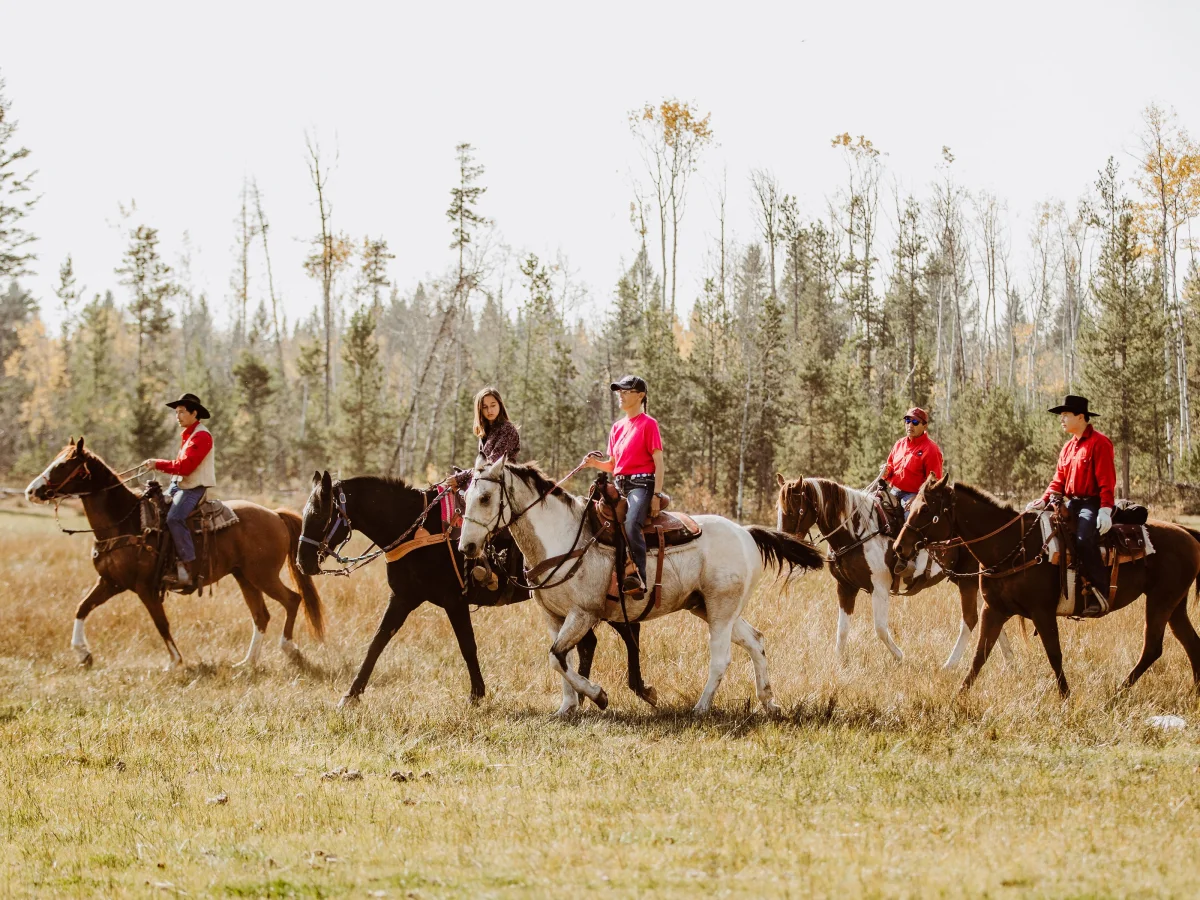
Reconciliation
Honouring tradition through technology
Photo credit: Laureen Carruthers Photography
For thousands of years, the Tl’etinqox of the Tsilhqot’in have gathered on land hemmed by the Chilcotin River in the British Columbia interior. Here, the “People beside the River” have been caretakers of their territory, building on their historic connections to the land, their traditions, and each other.
Today, they are leveraging technology — powered by fast and reliable internet through the TELUS PureFibre network — to honour their traditions and create new economic and educational opportunities, accomplishing what their ancestors set out for them to do, even through very modern means.
Government policies have made the digital divide in Canada worse, leaving some communities without optimal internet. Get informed.
In partnership with the All Nations Trust Company’s Pathways to Technology Project, and the Interior Health Authority, TELUS has connected nine First Nations and 13 previously underserved reserves in the Cariboo Chilcotin area to its PureFibre network. The implementation of consistent, high-speed internet is creating avenues for the Tl’etinqox to explore new economic options, while rebuilding their territory following a devastating forest fire in 2017. The wildfire blazed across the territory, leaving blackened earth and scorched trees in its wake. Banding together, the community fed and housed members of the nearby non-Indigenous community of Alexis Creek, while also fighting to protect their own.
“Our people want to take care of people,” said Tl’etinqox Executive Director and Councillor Ashton Harry. “When it comes to a crisis, they harmonize together.”
About 70 per cent of the land was ravaged — the only thing that didn’t burn was the community, thanks to the tireless efforts and skill of Tl’etinqox firefighters and community members.
“When Elders talk about the fire, it’s a rebirth — it did a cleansing. We had never seen a cleansing of that magnitude,” Harry shared. “Now it’s time for us to take care of the earth again.”
As Tl’etinqox continues to rebuild following the blaze — replanting, assessing trees, ensuring trails are safe, and making repairs where the blaze cut a path across the land — they are also leveraging the opportunities afforded by modern technology.
“We can meet with experts virtually. We don’t have to bring them out,” said Harry. Connectivity came just in time for the more than 500 people living in the Tl’etinqox community as the COVID-19 pandemic forced people to find new ways to work and connect.
Even though the public health guidelines forced many to stay home, the Tl’etinqox were able to use modern technology to maintain tradition, offering language classes, beading tutorials and virtual smudging through social media.
“Being around your people is an intrinsic part of being First Nations,” said Harry. “The pandemic showed how dependent we are on connection. We are used to being around people all the time. We kept that up and we wouldn’t have been able to do that without PureFibre.”
Beyond the immediate needs created by the pandemic, the capacity and speed of the network has now opened education and training opportunities, prompting increased engagement with the Tl’etinqox Adult Education Centre.
“Before, we had to let people come to the office to do the work. We knew it was a need,” Harry shared, adding there was always an underlying concern about bandwidth and how multiple users would impact the First Nation’s ability to do business. When PureFibre came in, people were able to access education at the tip of their fingers in their homes.
It ensures success when people are comfortable in their space.
“From those doing distance education to people looking for practical training, such as chainsaw safety and dangerous tree assessment, people no longer have to leave the community to get the skills they need,” said Harry.
Education Manager and Councillor Melanie Johnny, who works with up to 300 students each year across all grade levels and into post-secondary, affirmed the critical role internet played through the pandemic. With schools closed, students relied on stable connectivity to keep up with their courses — no matter where their school was.
“Not all the classes they need are offered here. It used to be they’d have to go into the city to get those courses, but with the pandemic, it was the reverse,” said Johnny.
“With community support and the guidance of a dedicated principal — and dependable internet connections — no student was left behind during school closures,” Harry affirmed. “Every kid accomplished their grade level.”
The Tl’etinqox have also leveraged additional economic opportunities. Increased bandwidth and reliable network connection mean virtual meetings are a possibility — opening up prospects well beyond their territory.
“We can bring economic opportunity to my community without having to leave it,” Harry said.
Through world-leading network technology, underpinned by a long-standing passion for creating stronger, healthier communities, TELUS is committed to supporting the goals of Indigenous Peoples. TELUS believes that connectivity, in concert with human compassion and ingenuity, is intricately linked to positive economic, social, health and community outcomes.
Understanding shared history, developing, and deepening meaningful, productive relationships with Indigenous Peoples including First Nations, Métis and Inuit communities, has led to productive partnerships, many of which resulted in advanced connectivity for Indigenous Peoples and communities.In partnership with Indigenous governments and through co-funding arrangements with the governments of BC and Canada, TELUS has connected 48 communities in 2021 alone.
In 2021, TELUS also released the Reconciliation Commitment, the first step in the Reconciliation strategy that weaves together intent, values and priorities with four guiding pillars: Connectivity, Cultural Responsiveness & Relationships, Economic Reconciliation, Enabling Social Outcomes. Underpinning these pillars is the integration of Indigenous ways of knowing and ethical space into TELUS. Ensuring that Indigenous ways of knowing and ethical spaces are embedded into the fabric of our commitment to reconciliation, is a priority. The full action plan was released in the 2021 Indigenous Reconciliation & Connectivity Report featuring commitments and more stories of outcomes supported by connectivity.

Help support connecting communities
Better government policies are needed to ensure better connectivity for Canadians.


